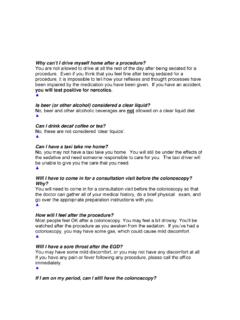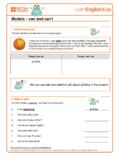Transcription of Vehicle data acquisition using CAN - OptimumG
1 R a c e c a r E n g i n e e r i n g C o n s u l t i n g & S e m i n a r s Tel: 1-303-752-1562 Fax: 1-303-368-0121 OptimumG LLC 8801 East Hampden Avenue Suite 210 Denver, Colorado, 80231 USA Vehicle data acquisition using CAN By Henning Olsson, OptimumG Introduction: data acquisition is one of the best tools to increase the understanding of Vehicle behavior. One can get tons of information just from a couple of potentiometers and accelerometers connected to a simple data logger. However as one adds more and more sensors a number of problems arise. First, the number of cables and connectors increase to where it becomes both a logistical and economical issue. With 100 connectors instead of 10, the risk of one failing is ten times as big; reliability thus becomes an issue. In the same way, troubleshooting a faulty cable or connector in a large wire harness becomes very time consuming. Sending analog or frequency signals through un-shielded cables can also result in signal disturbance coming from other systems on the Vehicle .
2 Fortunately there are methods with which these problems can be avoided. The common denominator for these methods is that data is sent digitally in a network. The network most commonly used in automotive applications is the CAN network (Controller-Area Network) (see figure 1). Before we go further into the CAN network, let s look at why it is more suitable then other types of networks commonly used (Ethernet, USB): 1. data rate The CAN network can run at different speeds, where the fastest typically is 1 Mbit/s. Compared with Ethernet (>1 Gbit/s) and USB (480 Mbit/s) networks this is pretty slow, but compared with RS-232 ( Mbit/s) is fast. 2. Error handling When the CAN network was developed a very high level of security was required (for critical Vehicle systems such as engine management and Vehicle stability controls etc.). The CAN network has a high error detection rate which results in virtually no data being lost. In other networks this is not as high of a priority.
3 3. Synchronization In a CAN network all nodes are synchronized with every packet of data that are sent through the network (although the actual sensor measurements are not necessarily synchronized). In an Ethernet network synchronization is difficult due to different latencies (time delays) in each node of the network. The USB is an asynchronous network but later workarounds allows it to be run fully synchronous. Figure 1 data logging setup R a c e c a r E n g i n e e r i n g C o n s u l t i n g & S e m i n a r s Tel: 1-303-752-1562 Fax: 1-303-368-0121 OptimumG LLC 8801 East Hampden Avenue Suite 210 Denver, Colorado, 80231 USA 4. Hardware The CAN network usually runs on very inexpensive and easily manageable single twisted pair wires. Since the CAN runs fully synchronous there is no need for hubs or switches that manages the traffic (such as the case with Ethernet and USB). 5. Reliability The CAN network runs even if one node fails, if a central node in an Ethernet or USB network fails parts of the network will fail (CAN doesn t have any central nodes).
4 CAN Bus Hardware: The CAN bus uses inexpensive twisted pair wires to send data . All the nodes are connected to the same line (bus) with small branch lines. All nodes sit serially on the bus which then forms a single line. If any of the nodes fail on the bus, the functionality of the bus will not be affected. However if the line fails, part of the bus will be disconnected and might not work properly (figure 2). CAN Unit 3 CAN Unit 4 CAN Unit 2 CAN Unit 1 CAN Unit 3 CAN Unit 4 CAN Unit 2 CAN Unit 1 CAN Unit 3 CAN Unit 4 CAN Unit 2 CAN Unit 1abcCAN Unit 3 CAN Unit 4 CAN Unit 2 CAN Unit 1 CAN Unit 3 CAN Unit 4 CAN Unit 2 CAN Unit 1 CAN Unit 3 CAN Unit 4 CAN Unit 2 CAN Unit 1abc Figure 2 CAN Bus topology a) Typical setup, b) Bus continues to operate when one unit fails, c) Main line failing resulting in parts of network get disconnected and may or may not function properly Each CAN unit may have completely different functions, data logging, sensor, AD/DA-converter, display.
5 However, all of them will have two components to handle the CAN bus. First is the R a c e c a r E n g i n e e r i n g C o n s u l t i n g & S e m i n a r s Tel: 1-303-752-1562 Fax: 1-303-368-0121 OptimumG LLC 8801 East Hampden Avenue Suite 210 Denver, Colorado, 80231 USA transceiver which receives and sends data on the bus. It sends the data to the CAN Controller which interprets the data and determines what it should do with the data (ignore it or pass it along). The CAN controller is thus the intermediary between the CAN bus and the microprocessor in the sensor/ data logger/display. Since the CAN bus only consists of two wires, virtually any type of connector can be used. This allows more exposed parts of the network to use more durable wiring and connectors (figure 3). Figure 3 Connectors A CAN network can use many different types of connectors, ranging from very inexpensive connectors (left) to environmentally sealed connectors (center) to low-weight and compact connects (right).
6 data on the CAN bus is sent in binary form. When the voltage is the same in both lines there is a recessive bit (1) on the bus. When there is a voltage difference of at least V, there is a dominant bit (0) on the bus. If one unit is sending a recessive bit and another unit is sending a dominant bit, the value on the bus will be dominant (0). As data is transmitted over the bus, the voltage will change in both of the wires up to a million times per second. This can result in that the signal is being reflected back at the end of the line and cause interference. Which can make any transmission on the CAN bus impossible. The solution to this problem is to have terminating resistors (typically 120 ohm) at each end of the line which stop the reflection from occurring. In Vehicle testing the last CAN unit on the line is usually either a sensor or a data logger (but the data logger doesn t necessarily have to be at the end of the line).In many cases these units have built-in terminating resistors that can be turned on from within their configuration software.
7 The wrong number of terminating resistors is a common cause of failure in a CAN bus. CAN Bus protocol: When data is sent over the bus, it follows a certain format, called the network protocol. All data on the network is sent in the form of messages. In the CAN protocol the message contains the following fields (figure 4): 1. Start of frame Contains a dominant bit, which is used to synchronize all units on the bus. 2. Arbitration field Contains a message identifier 3. Control field Contains information on how big the message s data field is. R a c e c a r E n g i n e e r i n g C o n s u l t i n g & S e m i n a r s Tel: 1-303-752-1562 Fax: 1-303-368-0121 OptimumG LLC 8801 East Hampden Avenue Suite 210 Denver, Colorado, 80231 USA 4. data field Contains the actual information that is being transmitted. Can range from 0 to 64 bits (with 8 bit increments). 5. CRC field Contains information that allows the receiver to determine if an error has occurred in the transmission 6.
8 ACK field Contains a gap in the message where the receiving units can send a dominant bit if they have detected an error in transmission. 7. End of frame Contains seven recessive bits, this effectively works as gap before the next message. Msg IDData frame (0-64 bits)CRC End1 bitMsg IDData frame (0-64 bits)CRC EndMsg IDData frame (0-64 bits)CRC End1 bit Figure 4 CAN message layout The CAN message consist much more than just the actual data itself. A couple aspects of the protocol are worth some extra attention. Start of frame, bit time and synchronization: In order for the bus communication to work, all CAN units must be synchronized. The start of frame bit serves as an opportunity for all units on the network to synchronize their internal clocks. In a CAN network one bit is sent every bit time . By having all the units synchronized and having their clocks running the same speed, all units know when a bit is sent and can thus read it.
9 The bit time depends on what speed the bus is running at (usually 125 kbit/s, 512 kbit/s or 1 Mbit/s). With a higher speed the bit time will be shorter, for 1 Mbit/s the bit time will be 1 microsecond (1/1 000 000) whereas for 125 kbit/s the bit time is 8 microseconds (1/125 000). The CAN protocol uses a method called bit stuffing. This means that after 5 identical bits (00000 or 11111) an opposite bit is automatically inserted (000001 or 111110) in the transmission. This gives all units an extra opportunity to resynchronize their clocks during the actual message (actually the CAN units can use every change of bus state, 0 1 or 1 0, to resynchronize). The inserted bit is automatically removed by all units and doesn t affect the actual data sent. Bit stuffing is done in the 5 first fields in the message (Start of frame, Arbitration field, Control field, data field, CRC field). One of the reasons why this extra resynchronization is required is due to the fact that most of the clocks in units are quartz based oscillators which are temperature dependent.
10 With CAN units all over the Vehicle , one can imagine the range of different temperatures at which they operate. R a c e c a r E n g i n e e r i n g C o n s u l t i n g & S e m i n a r s Tel: 1-303-752-1562 Fax: 1-303-368-0121 OptimumG LLC 8801 East Hampden Avenue Suite 210 Denver, Colorado, 80231 USA Message ID: Sending a message on a bus can be quite the challenge; how does a unit know when the bus is available so that it can transmit its message? Imagine a room with 100 people trying to convey their message to everyone else. If everyone talks at the same time, nobody will be able to hear anything. But if the tallest person (everyone can easily see the tallest person) would talk first and then sit down, then the second tallest person would talk and then sit down only one person would talk at a time. With a system like that everyone would get their message across. So how does the CAN unit know who is the tallest ? Well, this is where the message ID comes in to the picture.












